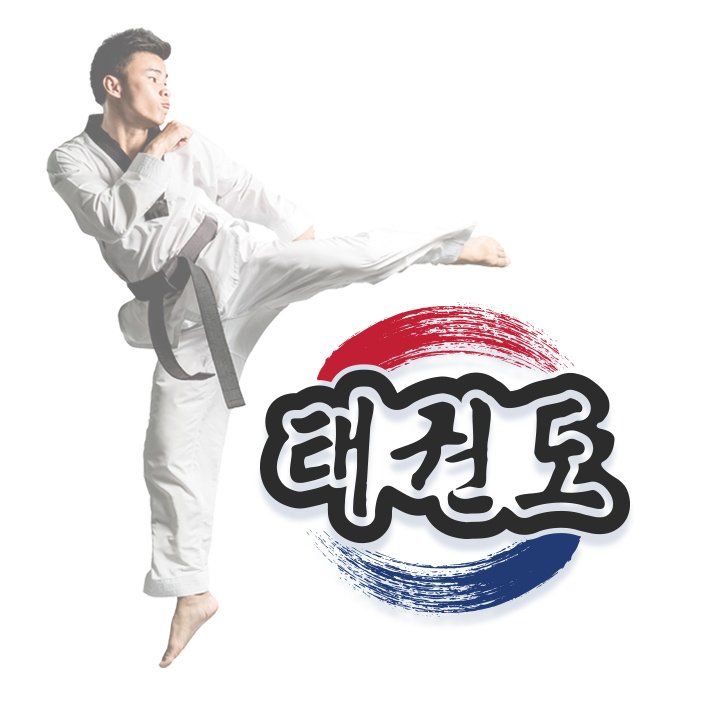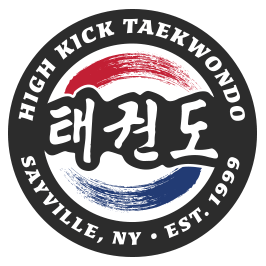HISTORY OF TAEKWONDO
During the Yi dynasty, 1392 – 1907, in order to promote the art of the general population and not just the military nobility as in the past, the first book, Muye Dobotongji, was written on the art of Soo Bak. This book had kept the art alive for the first half of the dynasty. However, during the next half, the practice of Soo Bak had declined and returned to its original purpose of physical fitness for political conflict and the de-emphasis of military activity led to more pursuits that are scholarly. Once more, the art was practiced in secrecy and was handed down from generation to generation among individual families with limited knowledge.
In 1909, Japan invaded Korea and occupied the country for the next 36 years. During this time, native Koreans were banned from the practice of all military arts. Ironically, this rejuvenated and renewed the growth of Soo Bak. Koreans then formed an underground training and traveled to Buddhist temples to study their martial art, Soo Bak or Taek Kyon. However, some left Korea to China and Japan for work and study, but were exposed to the arts of those countries as well. In 1943, judo, karate, and kung fu were officially introduced and the interest in the martial arts flourished. It was not until 1945 when Korea’s liberation from Japan established its own and known fighting arts. These Korean arts varied due to the influence that the Chinese and Japanese arts had on the Korean masters and how much they had modified over the years.
In 1945, the first kwan (“school”) opened in Seoul. It was named the Chung Do Kwan. Over the next several years, more schools began to open. They were The Moo Duk Kwan, Yun Moo Kwan, Chang Moo Kwan, Chi Do Kwan, Ji Do Kwan (our style), Song Moo Kwan, Oh Do Kwan, and a few more. Each claimed to teach the traditional Korean martial art, however, each also emphasized a different aspect and soon different names were known for these styles. They were Soo Bak Do, Kwon Bop, (spread by Buddhist monks in China), Kong Soo Do, Tae Soo Do, Tang Soo Do (traditional Korean name), and Dang Soo Do, as well as Taek Kyon.
In addition, in 1945, the Korean Armed Forces was formed and Taek Kyon became a regular part of the military training over the next several years and into the Korean War. The art was further publicized by demonstrations for both the military and general public. Special commando groups, the Black Tigers the most famous of these groups, were martial arts trained soldiers and were formed to fight against the communist forces of North Korea. They performed espionage missions and assassinations. Many had lost their lives during this time. After the Korean War, the Korean 29th Infantry Division was formed in 1953 and was responsible for all Taek Kyon training in the Korean Army. In 1955 Tae Soo Do became a common name for all schools and styles for the benefit of the art and the schools. However, in 1957 the name changed again, this time to the familiar and modern name of Taekwondo, for its similar name to Taek Kyon and for it’s meaning of “the art of kicking and punching”.
In 1961, the Korean Taekwondo Association was formed and sent instructors all over the world to perform demonstrations to governments and the general public. Taekwondo spread from the Korean Army to high schools and universities. The art was everywhere. During the Vietnam War instructors were sent to train the South Vietnamese troops because Taekwondo was know for being an effective fighting art. Soon other government were requesting Korean instructors to train their countries in this art.
Taekwondo Became an Official Medal Sport at the Sydney Olympics in 2000.
By the 1970’s Taekwondo was know worldwide. The World Taekwondo Federation was formed on May 28th, 1973, as well as the
Kukkiwon (the national sports center in Seoul and World Taekwondo headquarters.) Kukkiwon is the only organization recognized by the Korean government as an international regulating body to coordinate Taekwondo activities outside of Korea. During that same year the first World Taekwondo Championships were held in Seoul and are now held around the world every two years. Taekwondo was soon recognized by the General Association of International Sports Federation, GAISF, which is an association of all Olympic and non-Olympic international sports. The GAISF introduced Taekwondo to the International Olympic Committee, IOC, and in 1980, the World Taekwondo Federation was admitted. The art became an official Demonstration sport in the 1988 Olympics in Seoul, Korea and in the 1992 Olympics in Barcelona, Spain. It is now an
official Medal sport since the 2000 Olympics in Sydney, Australia. As of June 2017, The World Taekwondo Federation is now know as
World Taekwondo.
In such a short period, from the formation of the WTF in 1973, Taekwondo has seen such a rapid growth that it is the most practiced martial art in the world with well over 20 million practitioners in over 200 countries. Taekwondo is an art that benefits all people and with its worldwide popularity and Olympic representation the art will only continue to grown. Taekwondo originated as a martial art and will always be a martial art. However, in recent years it is being promoted as a sport. Only 10% train in Taekwondo for competition, the remaining 90% train for learning respect, discipline, self-defense, and confidence. Combination of the two enhances this martial arts system!






